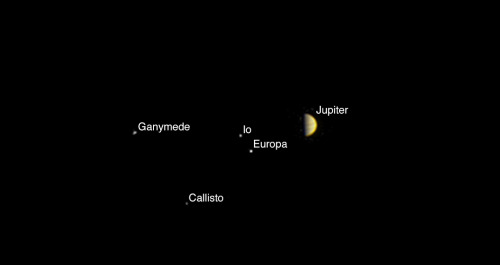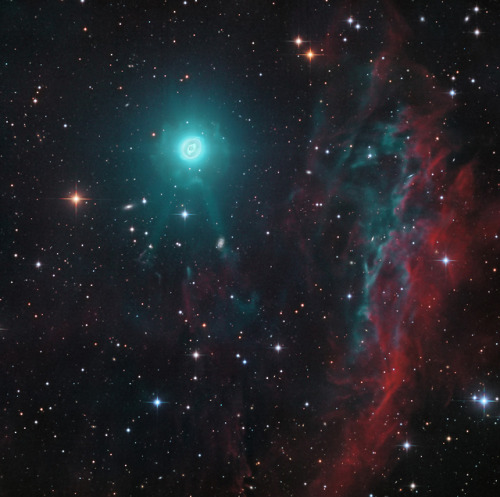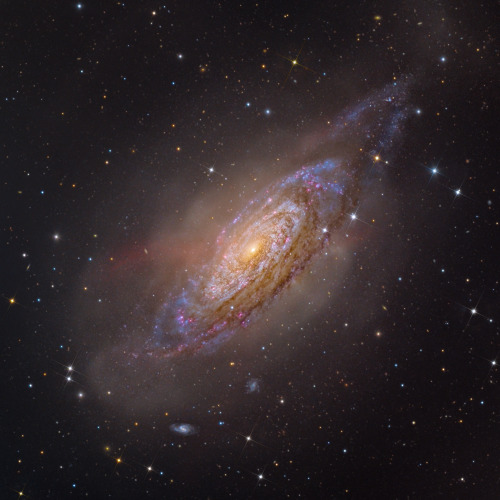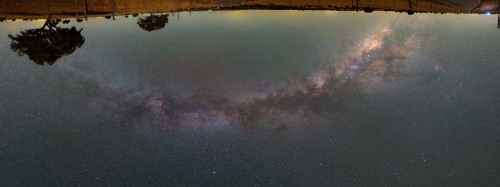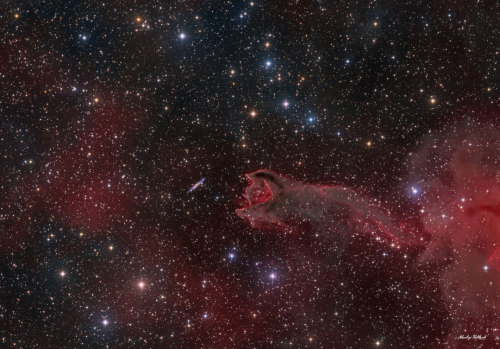#astronomy picture of the day
Image Credit: NASA, JPL, Juno Mission
Explanation:Approaching over the north pole after nearly a five-year journey, Juno enjoys a perspective on Jupiter not often seen, even by spacecraft from Earth that usually swing by closer to Jupiter’s equator. Looking down toward the ruling gas giant from a distance of 10.9 million kilometers, the spacecraft’s JunoCam captured this image with Jupiter’s nightside and orbiting entourage of four large Galilean moons on June 21. JunoCam is intended to provide close-up views of the gas giant’s cloudy zoned and belted atmosphere and on July 4 (July 5 UT) Juno is set to burn its main engine to slow down and be captured into its own orbit. If all goes well, it will be the first spacecraft to orbit the poles of Jupiter, skimming to within 5,000 kilometers of the Jovian cloud tops during the 20 month mission.
Post link
The Ghost of Jupiter’s Halo
Image Credit & Copyright: CHART32 Team, Processing - Johannes Schedler/Volker Wendel
Explanation:Close-up images of NGC 3242 show the cast off shroud of a dying, sun-like star fancifully known as The Ghost of Jupiter nebula. But this deep and wide telescopic view also finds the seldom seen outer halo of the beautiful planetary nebula at the upper left, toward Milky Way stars and background galaxies in the serpentine constellation Hydra. Intense and otherwise invisible ultraviolet radiation from the nebula’s central white dwarf star powers its illusive glow in visible light. In fact, planets of NGC 3242’s evolved white dwarf star may have contributed to the nebula’s symmetric features and shape. Activity beginning in the star’s red giant phase, long before it produced a planetary nebula, is likely the cause of the fainter more extensive halo. About a light-year across NGC 3242 is some 4,500 light-years away. The tenuous clouds of glowing material at the right could well be interstellar gas, by chance close enough to the NGC 3242’s white dwarf to be energized by its ultraviolet radiation.
https://apod.nasa.gov/apod/ap190711.html
Post link

Astronomy Picture of the Day: 01/22/13 – Jupiter Dances with the Moon. Photo by Juerg Alean
Astronomy Picture of the Day - July 26 2021
CG4: A Ruptured Cometary Globule
Image Credit & Copyright: Nicolas Rolland & Martin Pugh
Explanation:Can a gas cloud grab a galaxy? It’s not even close. The “claw” of this odd looking “creature” in the featured photo is a gas cloud known as a cometary globule. This globule, however, has ruptured. Cometary globules are typically characterized by dusty heads and elongated tails. These features cause cometary globules to have visual similarities to comets, but in reality they are very much different. Globules are frequently the birthplaces of stars, and many show very young stars in their heads. The reason for the rupture in the head of this object is not yet known. The galaxy to the left of the globule is huge, very far in the distance, and only placed near CG4bychance superposition.
Post link

